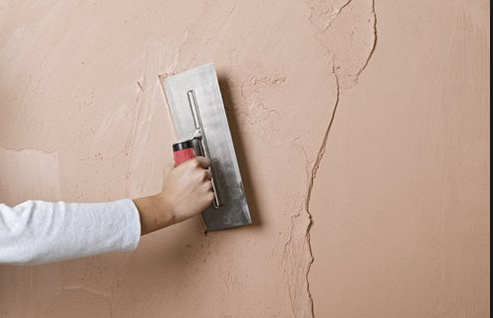Plastering Guidance from Professionals: Ideal Practices for Success
Plastering Guidance from Professionals: Ideal Practices for Success
Blog Article
Recognizing the Necessary Strategies of Smudging for Home Renovation Projects
In the world of home improvement, mastering the important methods of gluing can dramatically boost both the capability and visual allure of a room. Numerous approaches exist, each tailored to particular applications, whether for bring back historical stability or updating insides. The smudging procedure incorporates essential phases, from careful surface area preparation to the accurate application of products. Comprehending these fundamental elements is essential, yet numerous property owners overlook usual risks that can weaken their efforts. As we discover these methods further, the subtleties of accomplishing a perfect finish will certainly end up being increasingly apparent.
Sorts Of Plastering Strategies
Although various smudging methods exist, each offers an one-of-a-kind function and supplies distinct visual top qualities. One of the most usual methods is typical lime plastering, which is understood for its breathability and adaptability. This technique is specifically advantageous for older frameworks, allowing moisture to get away while keeping structural stability.
For an extra distinctive look, trowel-on plastering strategies such as stucco and Venetian plaster are often employed. Stucco, typically used in exteriors, offers sturdiness and weather resistance, while Venetian plaster is renowned for its glamorous, sleek coating.
Furthermore, there are much more specialized methods, such as skimming, which is a procedure that involves applying a thin layer of plaster over existing surfaces to develop a smooth finish. Each of these strategies can substantially affect the general aesthetic and functionality of a space, making it necessary to pick the proper technique based on the particular needs of a job.

Tools and Products Needed

The hawk offers as a system to hold the plaster, while the trowels, available in various sizes, are necessary for application and smoothing. A float, usually made of rubber or sponge, is made use of to accomplish a consistent surface.

Investing in top quality tools and products eventually adds to a more effective smudging project, producing a long lasting and visually pleasing coating. Appropriately outfitted, you lay the groundwork for efficient plastering and home improvement.
Step-by-Step Plastering Process
With the right devices and materials in hand, the following phase entails performing the smudging process with accuracy. Begin by preparing the surface area to make certain optimum adhesion. Eliminate any loose particles, dirt, or old plaster, and use a bonding agent if essential.
As soon as the surface is prepped, mix the plaster according to the producer's instructions, attaining a smooth, lump-free uniformity. Making use of a trowel, use the first layer, referred to as the scrape layer, to a density of concerning 5-10 mm. Guarantee uniform insurance coverage, and utilize a comb or scratcher to produce grooves for much better bond of subsequent layers.
After allowing the scratch layer to establish partly, apply the 2nd coat, or his explanation the brown layer, smoothing it out for an even coating. Apply the finishing browse around this site coat, which should be thinner and smoother.
Once the plaster has actually dried out completely, it can be sanded lightly to get rid of blemishes. Follow up with a guide prior to paint for a sleek final appearance.
Common Blunders to Avoid
Falling short to acknowledge typical errors can substantially influence the top quality of your plastering project. One constant mistake is insufficient surface preparation. Falling short to prime and clean the surface area can lead to poor attachment, leading to cracks and peeling. Moreover, ignoring to repair any kind of underlying issues, such as wetness or architectural damage, can endanger the plaster's stability.

Timing is also crucial; several inexperienced plasterers rush the application. Permitting the initial layer to completely dry completely before using succeeding layers is vital to prevent excessive splitting and shrinkage.
In enhancement, not home making use of the right tools can hinder the ending up procedure. Using trowels that are little or also big can influence your control and the level of smoothness of the finish.
Tips for Finishing Touches
Attaining a remarkable finish in plastering requires focus to detail and a few strategic strategies. When the preliminary application has actually dried, start the ending up process by making use of a moist sponge or trowel to smooth out any kind of imperfections. This action not only improves the surface but likewise assists to get rid of any type of excess plaster that may have dried out unevenly.
Following, consider the use of a fine-grit sanding block or pole sander for a more polished look. Sanding need to be done gently to stay clear of harming the underlying layer - Plastering. Constantly wear a mask to shield against dust breathing
After sanding, inspect the surface area under different lighting conditions to determine any missed out on disparities or spots. Apply a slim layer of completing plaster if needed, feathering out the sides to mix perfectly with the bordering location.
Conclusion
In final thought, understanding necessary plastering techniques substantially boosts the high quality of home renovation jobs. Understanding the different kinds of plastering approaches, making use of ideal tools and products, and sticking to a methodical application procedure contribute to attaining a smooth and resilient finish.
In the world of home renovation, mastering the important techniques of gluing can considerably improve both the capability and aesthetic charm of an area.Although different plastering methods exist, each offers an one-of-a-kind function and provides distinct aesthetic high qualities. Plastering. For a much more distinctive appearance, trowel-on plastering strategies such as stucco and Venetian plaster are commonly employed. Stucco, typically used in outsides, offers toughness and weather condition resistance, while Venetian plaster is renowned for its lavish, polished surface
Commonly used plaster types consist of gypsum plaster, lime plaster, and cement-based plaster, each offering different functions and settings.
Report this page